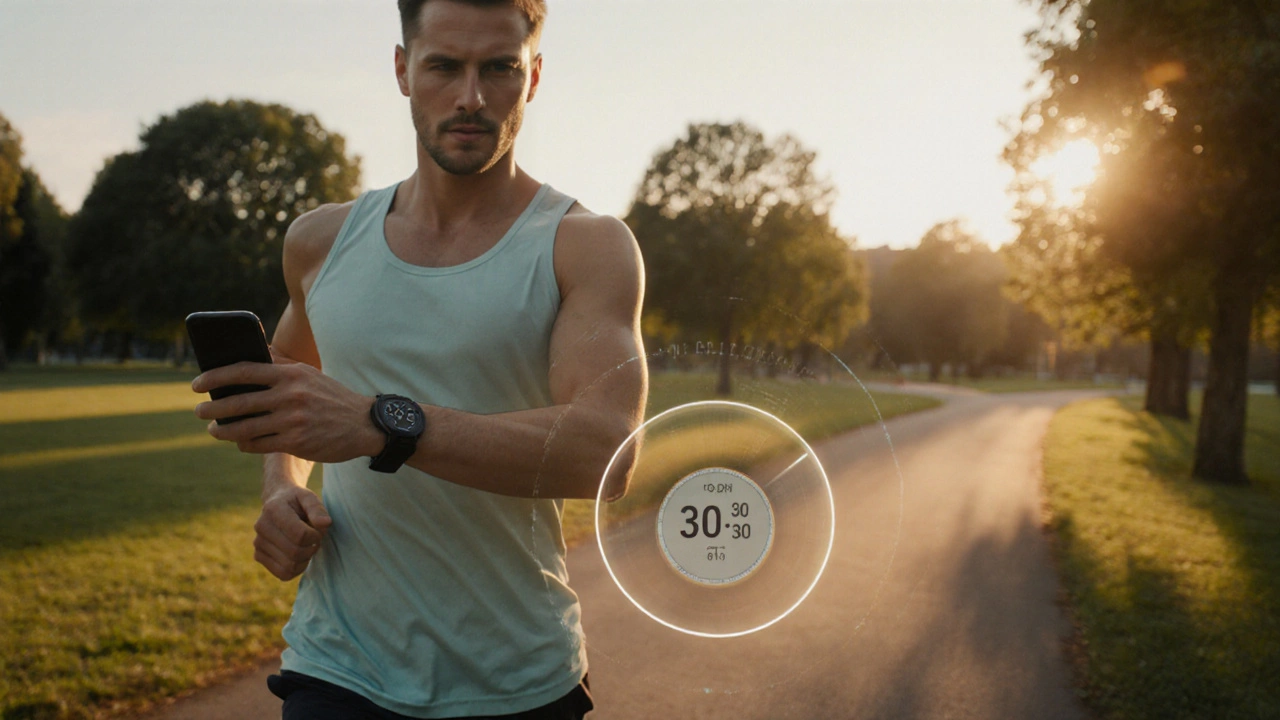When you hear HIIT ratio, the proportion of intense effort to recovery time in a high-intensity interval training session. Also known as work-to-rest ratio, it's not just a number—it's the secret switch that turns a tough workout into a fat-burning machine. Most people think HIIT is just about going all-out, but if your rest periods are too short or too long, you're wasting energy—or worse, risking burnout.
The HIIT ratio, the proportion of intense effort to recovery time in a high-intensity interval training session. Also known as work-to-rest ratio, it's not just a number—it's the secret switch that turns a tough workout into a fat-burning machine. Most people think HIIT is just about going all-out, but if your rest periods are too short or too long, you're wasting energy—or worse, risking burnout.
The 4:2:1 rule workout, a hybrid interval format combining strength, cardio, and hypertrophy phases. Also known as 421 rule, it's one of the most practical structures you’ll find in the posts here, and it’s built on a core HIIT ratio principle. That’s why you’ll see it pop up in guides for flattening your tummy, losing fat fast, or squeezing results into 30 minutes. It’s not magic—it’s math. A 4:2:1 ratio means 4 minutes of work, 2 minutes of rest, 1 minute of active recovery. But that’s just one version. The classic 1:1 ratio (30 seconds on, 30 seconds off) works great for beginners. The 2:1 ratio (40 seconds on, 20 seconds off) pushes your limits. And the 5:1 ratio? That’s for elite athletes or when you’re chasing maximum calorie burn in under 15 minutes.
What you choose depends on your goal. Want to lose belly fat? A 2:1 or 3:1 ratio keeps your heart rate up long enough to tap into fat stores. Prepping for a 30-minute personal training session? Stick to 1:1 so you can maintain intensity without crashing. Trying to build muscle while burning fat? The 4:2:1 pattern lets you mix strength moves with bursts of cardio—exactly what the 7-day flat belly plan and the 2-week fat-stripping guide use to lock in results without losing muscle.
And here’s the thing most trainers won’t tell you: doing HIIT every day doesn’t work if your ratio is off. Your body needs recovery to adapt. If you’re always going 100%, you’re not getting stronger—you’re getting tired. The best HIIT plans, like the ones in the posts below, balance intensity with smart timing. That’s why you’ll find guides on safe HIIT frequency, why trainers quit (hint: overtraining), and how to make 30 minutes count.
It’s not about how hard you go. It’s about how smart you time it. The right HIIT ratio turns a 10-minute workout into something that keeps burning calories for hours after you stop. It’s why protein shakes work better when paired with short, sharp intervals—your body’s metabolism stays elevated, and your muscles get the signal to rebuild. That’s the link between HIIT ratio, fat loss, and protein intake you’ll see repeated across these posts.
Below, you’ll find real plans—3-day, 7-day, 2-week—that use specific ratios to deliver results. You’ll see how the best belly-fat-burning exercise (burpees) is timed, how cardio and strength blend in under 30 minutes, and why some people get results in weeks while others stall for months. It’s all about the ratio. Get that right, and you don’t need hours. You just need the right seconds.

Learn the ideal HIIT ratio for beginners, why it matters, and how to start with a safe 30/30 work‑rest plan that you can progress over weeks.
READ